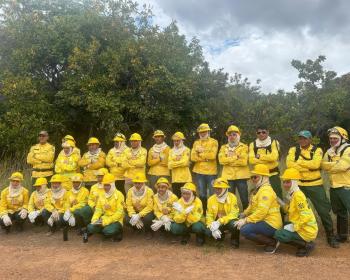
Por Verónica Aguilar (Mixtec, Equipo de CS)
En el Día de la Biodiversidad, presentamos el chaku o aprovechamiento de la vicuña en el paraje La Angostura de la provincia de Catamarca (Argentina). Se trata de una actividad económica y cultural que favorece la conservación de la naturaleza en tierras Indígenas.
By Esther Mwangaza
The Lemera cluster in the Democratic Republic of Congo is rich in cassiterite, a valuable mineral used in the global electronics industry. However, the pursuit of this mineral has led to conflicts with the ancestral land rights of Indigenous Pygmy communities. Mining operations have displaced many Pygmy families from their farmlands and cassava fields without consultation, leaving them without sustainable livelihoods and access to natural resources like water wells and sacred sites.
By Mariana Campos Rivera (CS intern)
“Blessed is the water
that makes the flowers of this threatened land grow
because in the face of death it grants beauty.”
-Fredy Chicangana (Quechua), Poet
Por Equipo de CS Rosy Sul González (Maya Kaqchikel), Verónica Aguilar (Mixtec), y Cesar Gomez (Maya Pocomam)
Por Sócrates Vásquez (Ayuujk, Equipo de CS)
By Polina Shulbaeva (Selkup, CS Consultant)
By Nati Garcia (Maya Mam, CS Staff)
I remember growing up and climbing trees as a child; they were my haven when I needed space. The trees were a place where I felt closest to myself. I always felt a strong connection to them from a young age, without understanding why. I also recall my mother telling me about her childhood in the jungles of Guatemala, where she would swing on the branches of the trees and the jungle was her playground. I deeply resonated with her childhood joy and connection with the trees.
By Georges Dougnon (Dogon, CS Staff)
Por Radio Yapti Tasba Bila Baikra
By Lucas Kasosi (Maasai, CS Intern)
When Mona Omar (Somali/Maasai) was a child, the land still spoke. Elders could predict the rains by watching the sky, birds, and the flowering of certain trees. They knew when to move to better pastures, which rivers would swell, and how to prepare for the dry season. The land was alive until one day, it wasn’t.
By Lucas Kasosi (CS Intern, Maasai)
On March 3, as the world observes World Wildlife Day, many will celebrate the achievements of conservation, the protection of endangered species, and the stewardship of ecosystems. Yet, for Indigenous communities, the reality of conservation often tells a different story, one of displacement, exclusion, and ongoing struggles for land and rights.